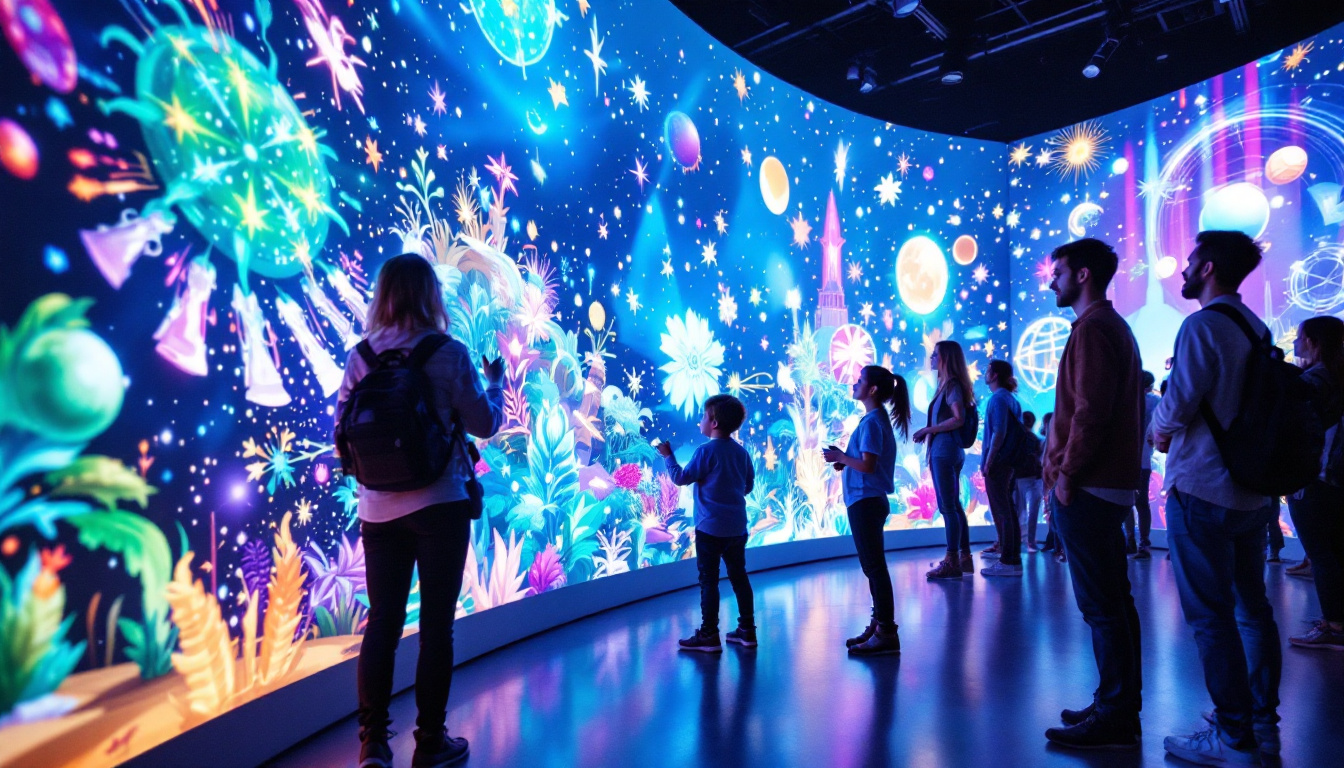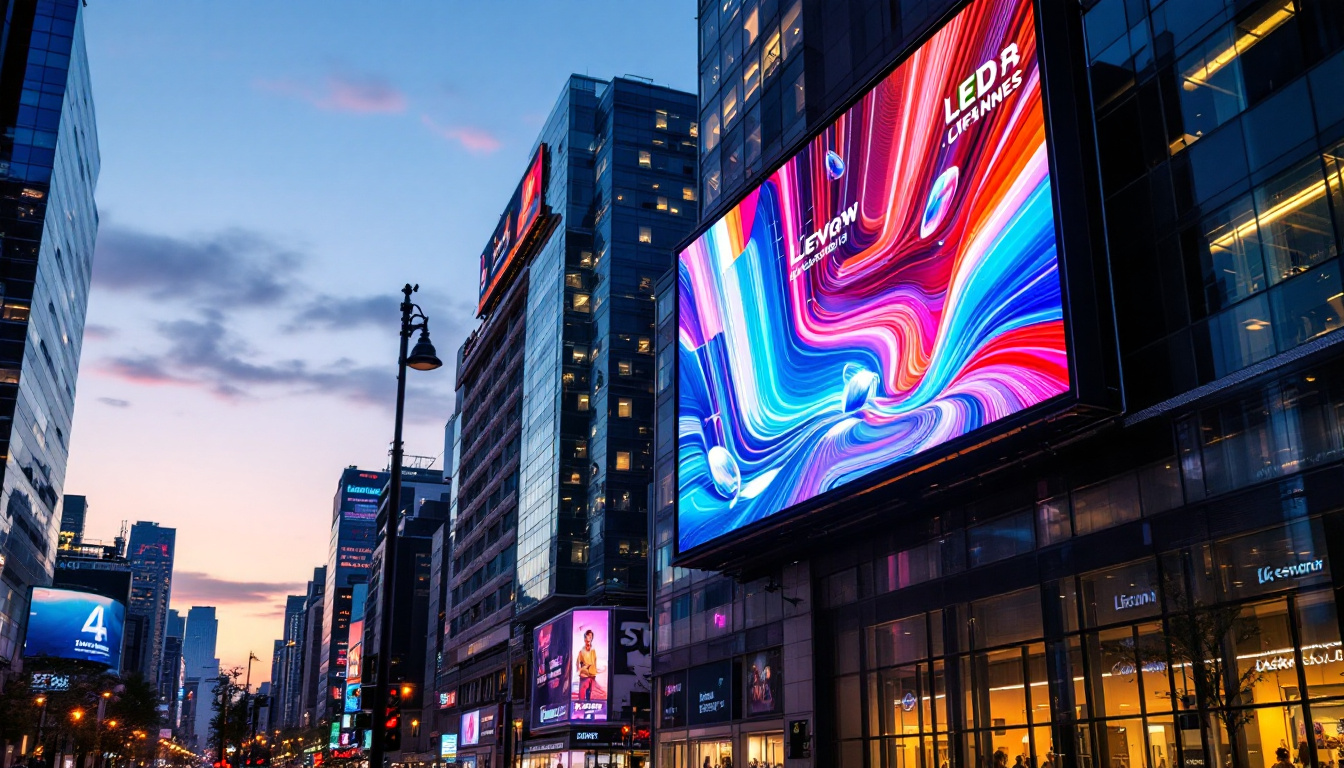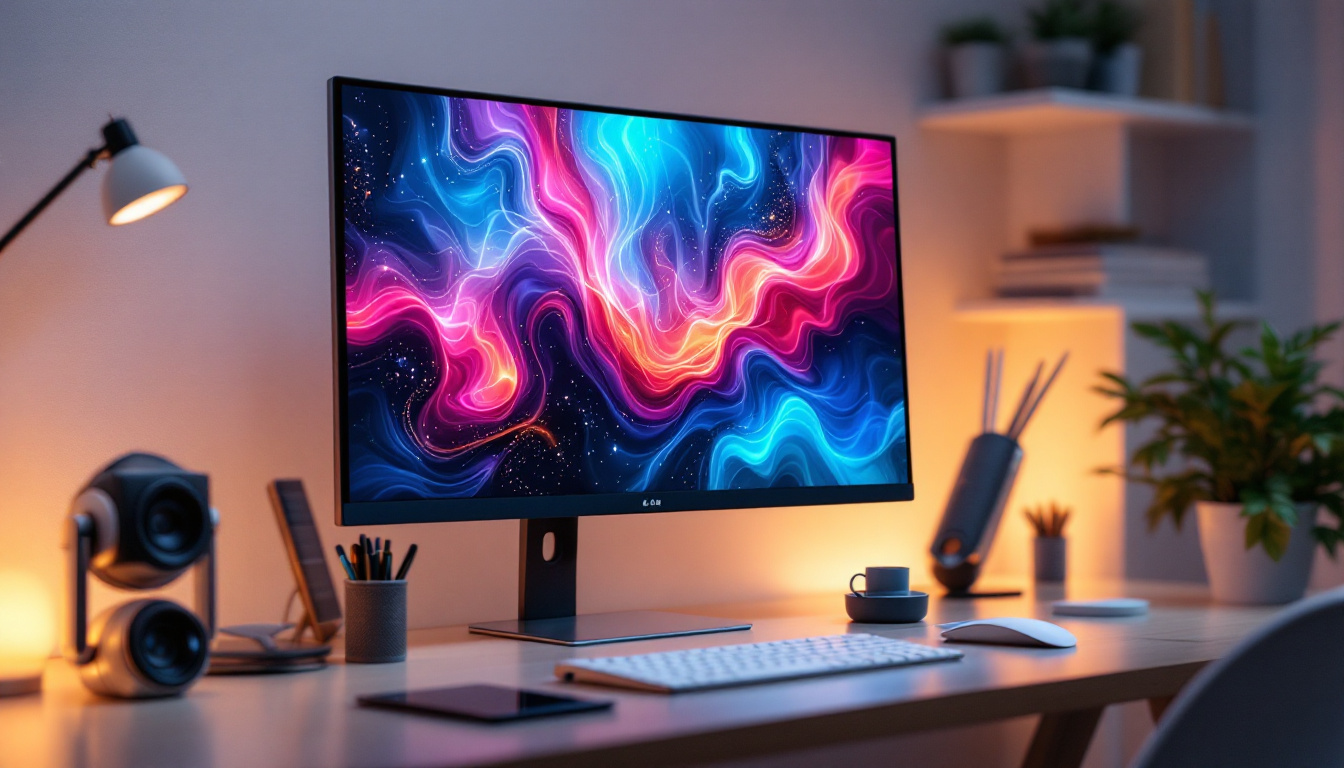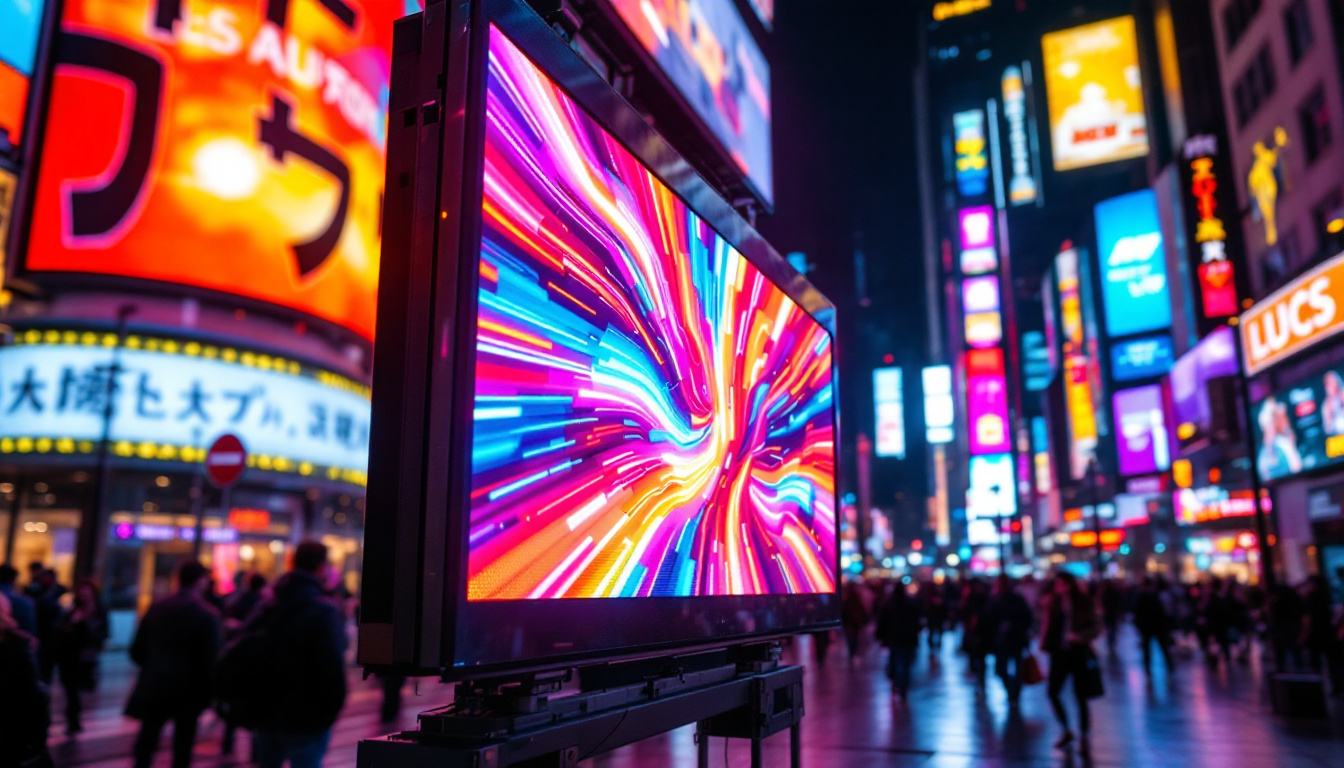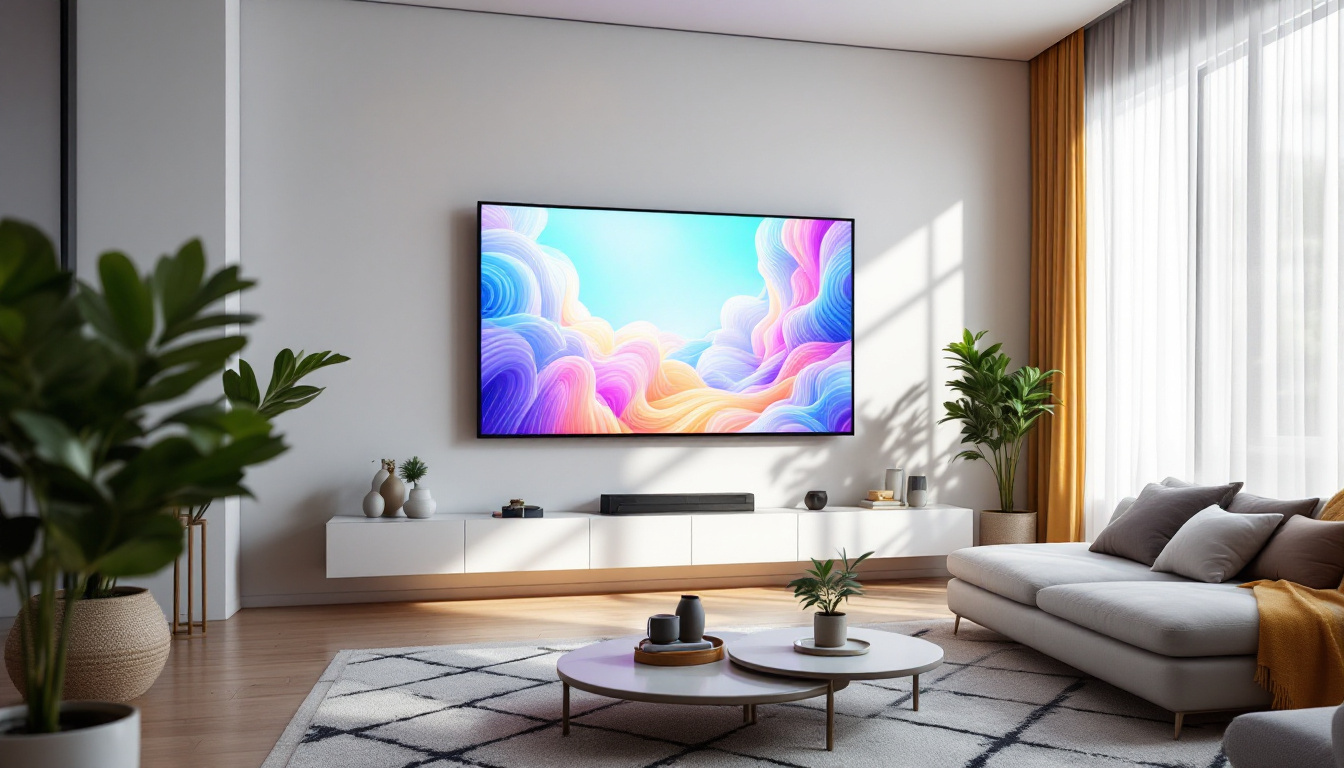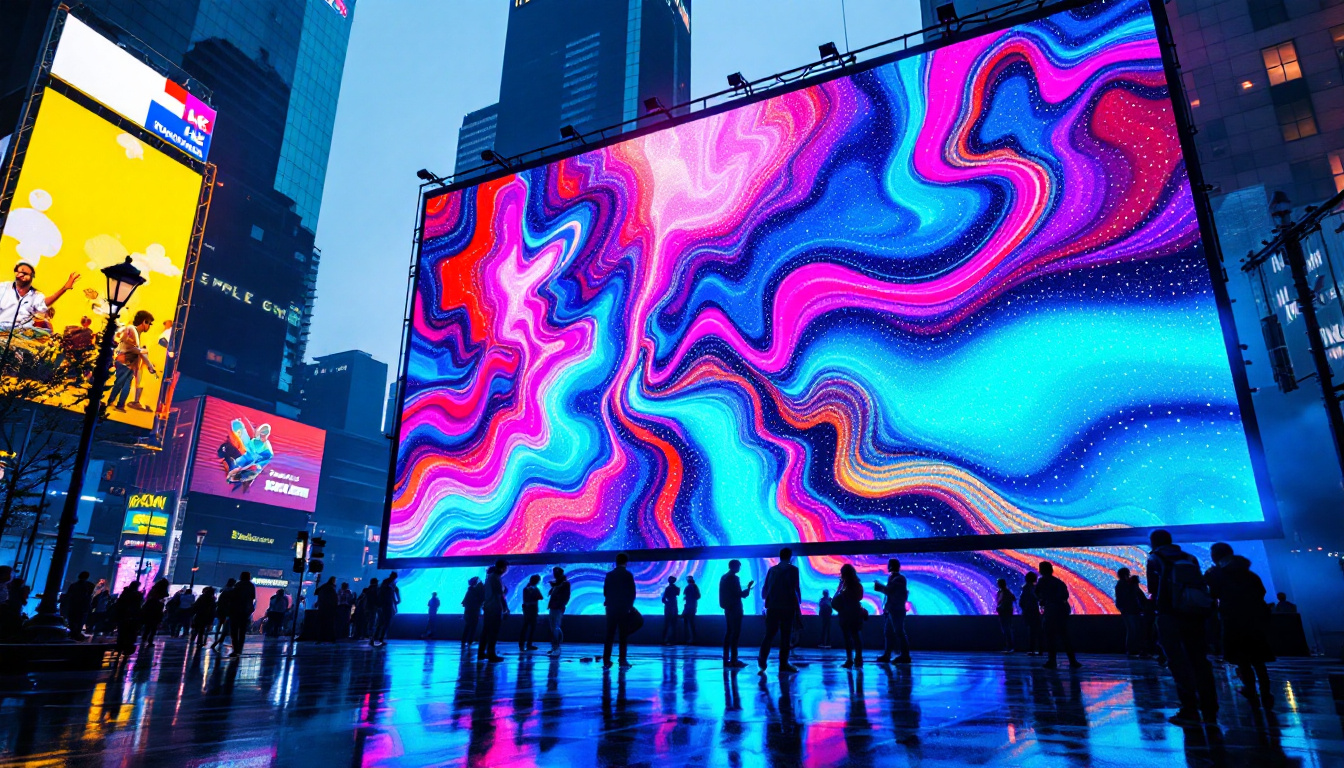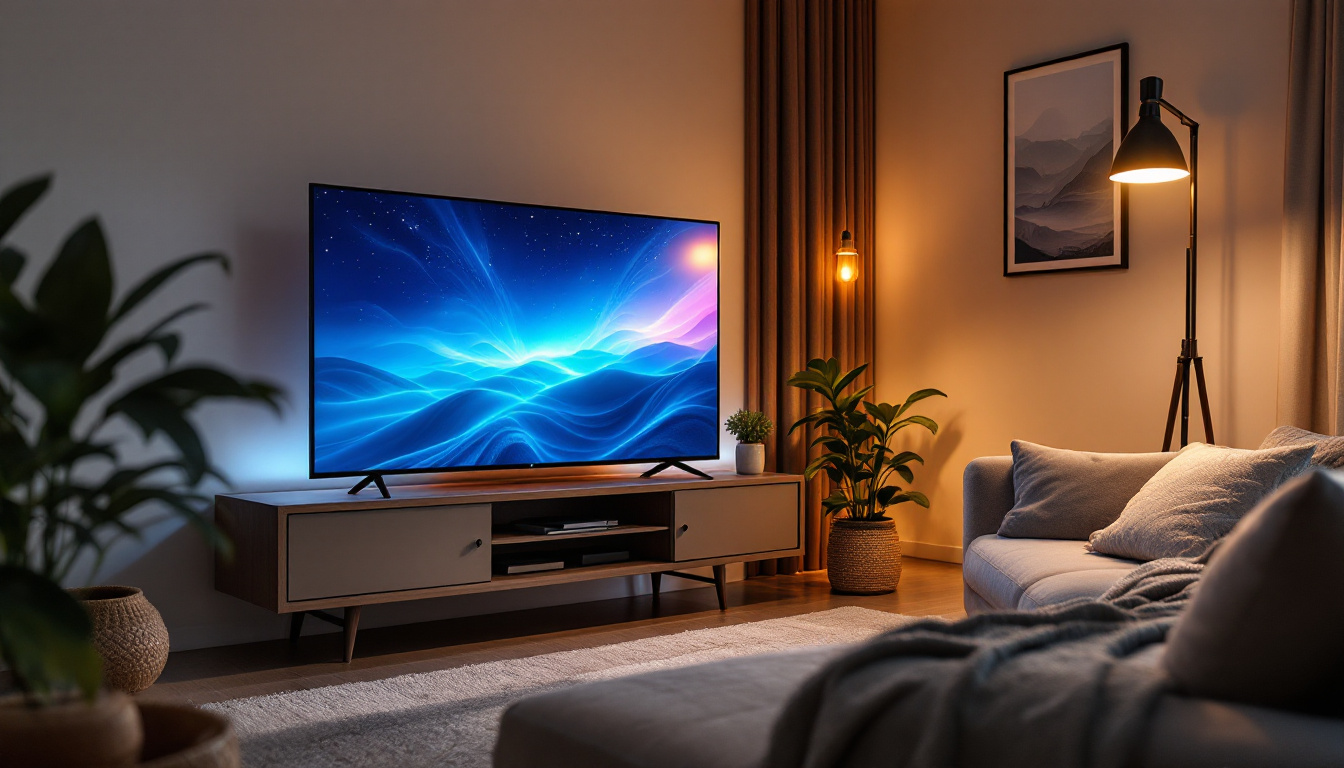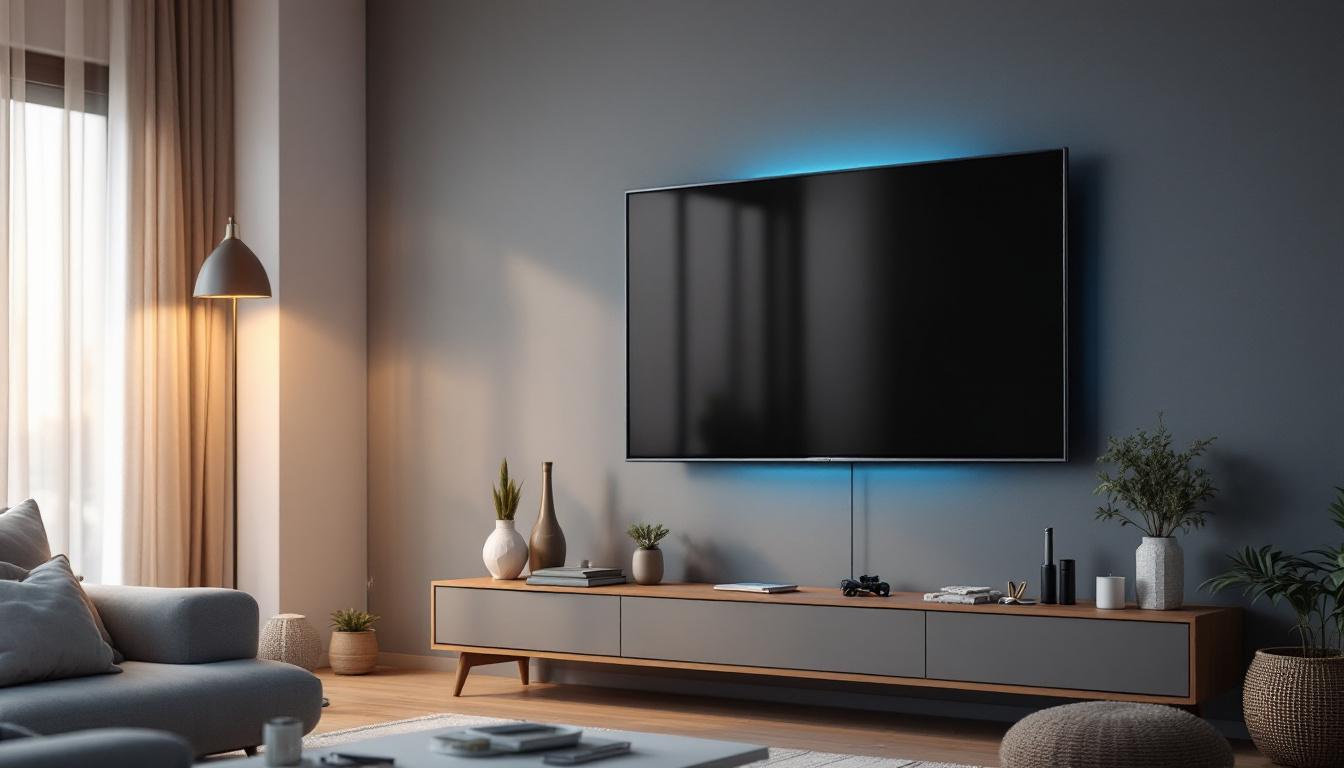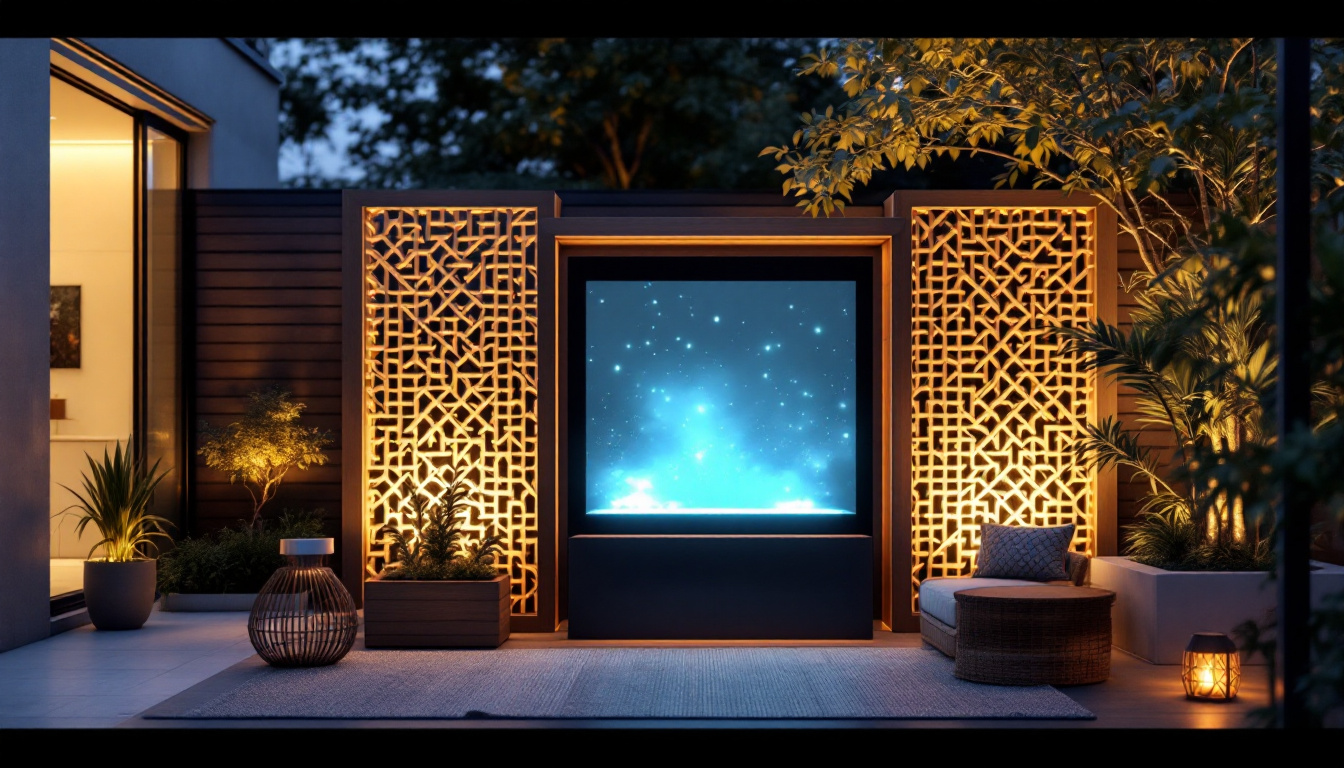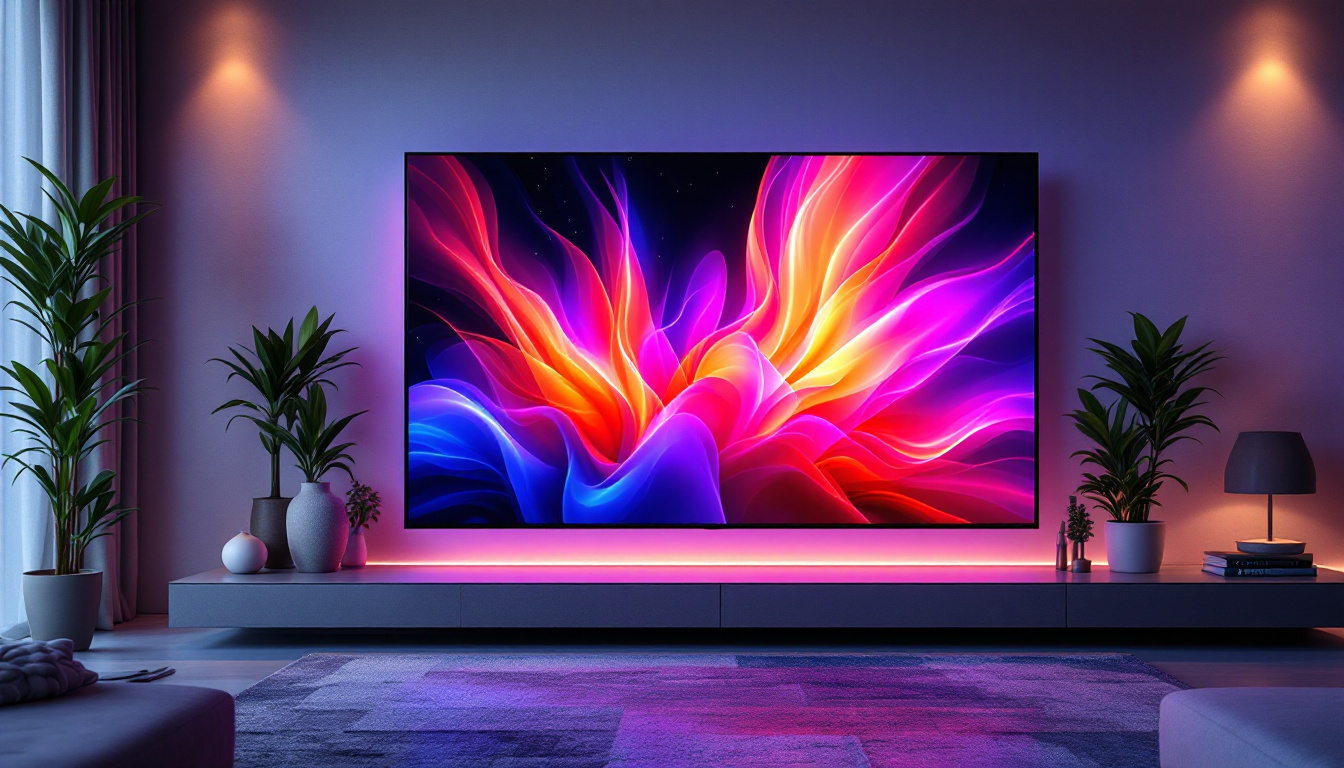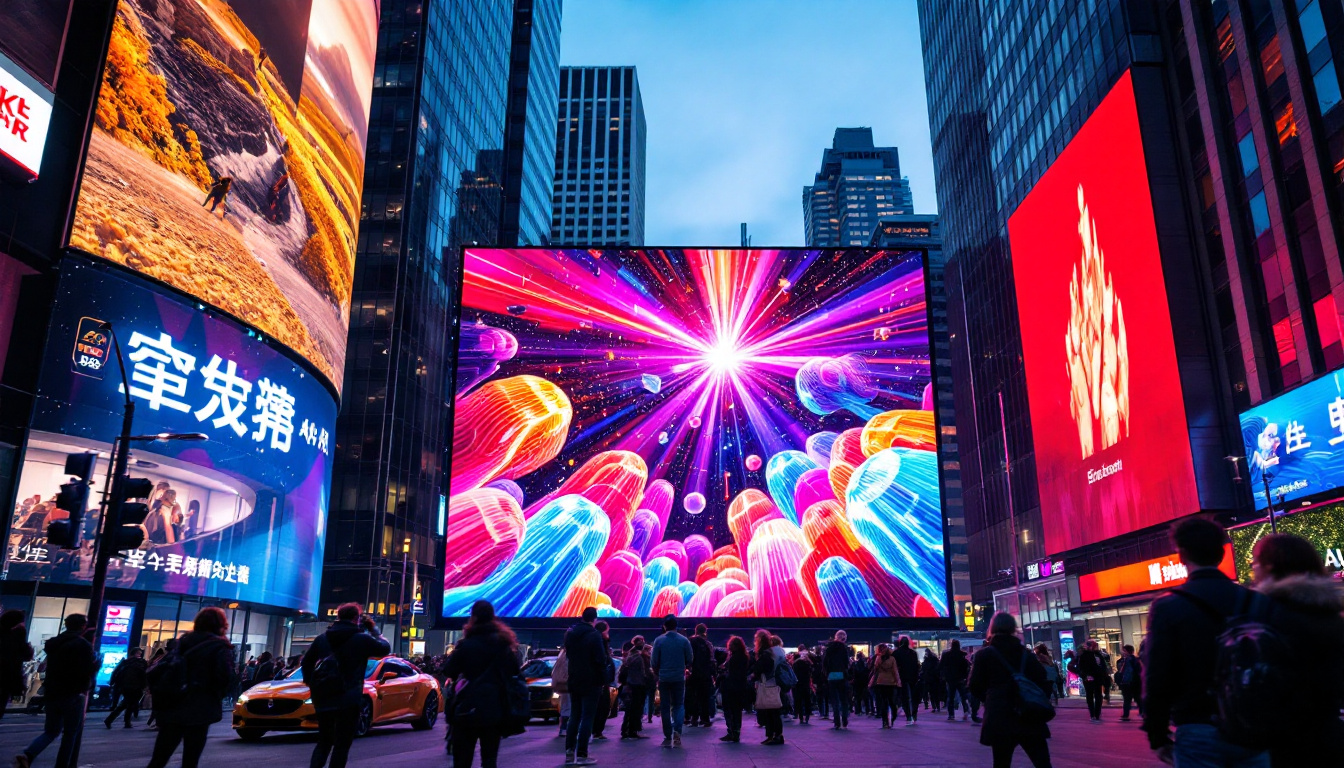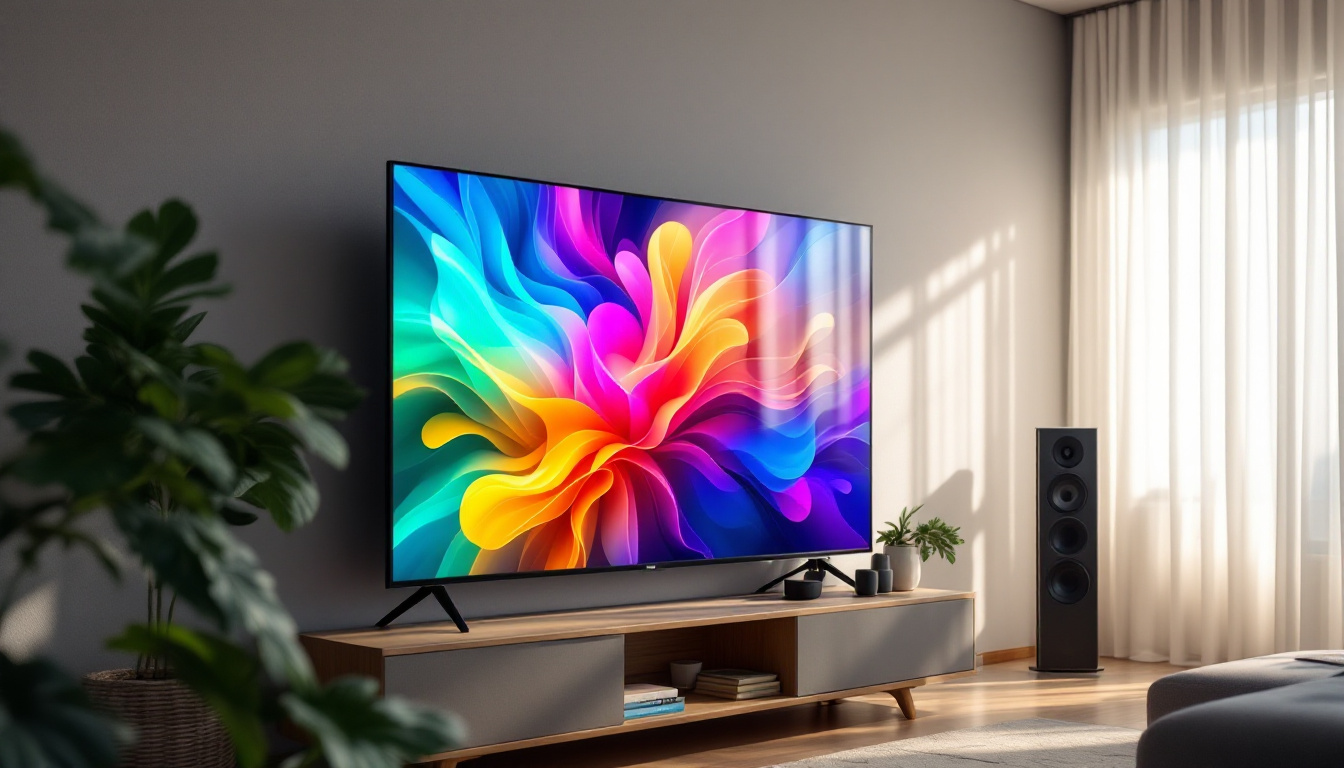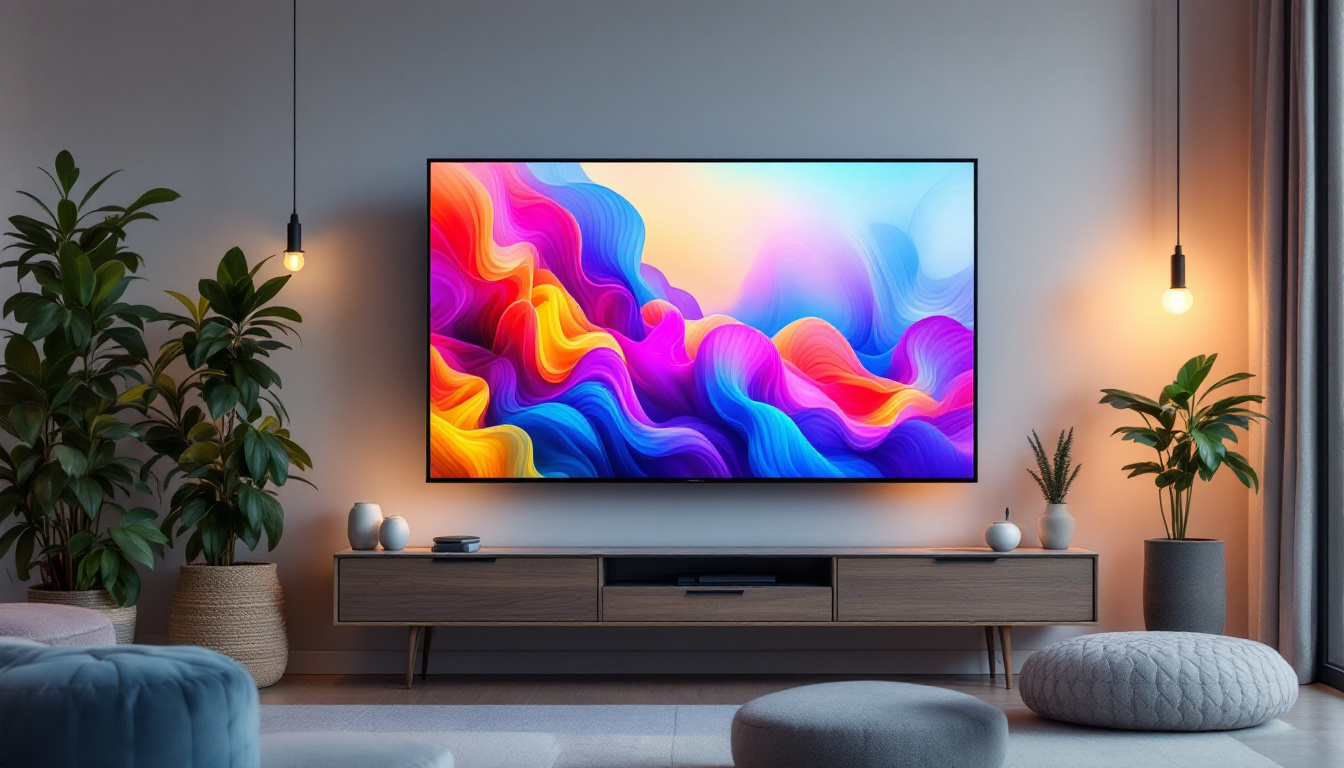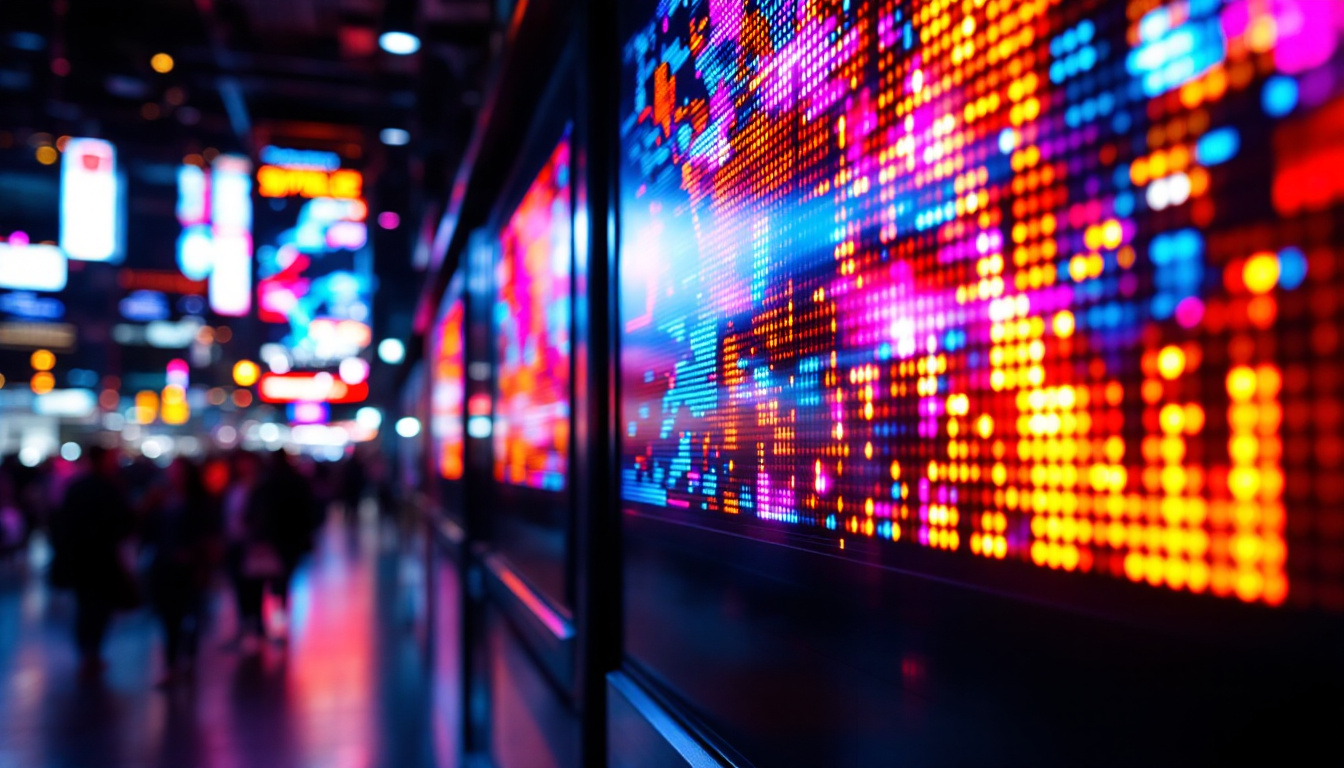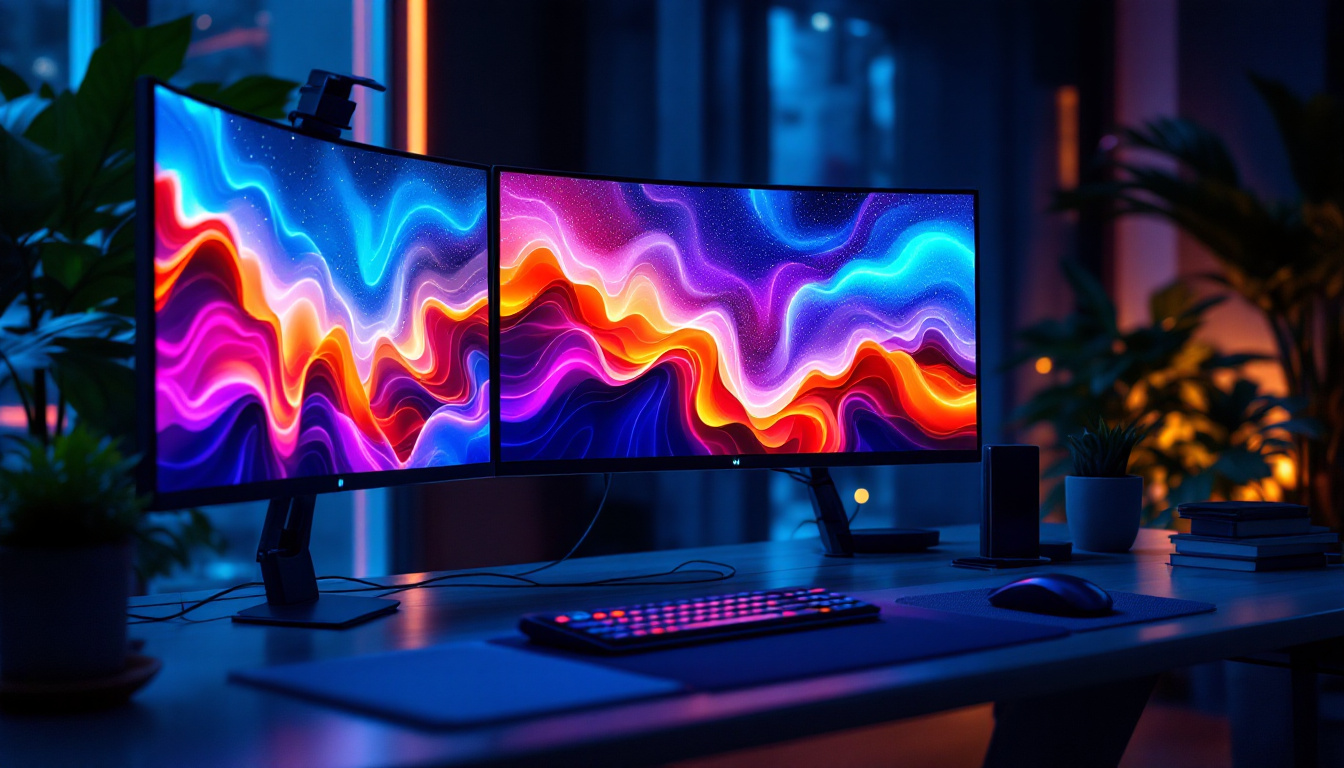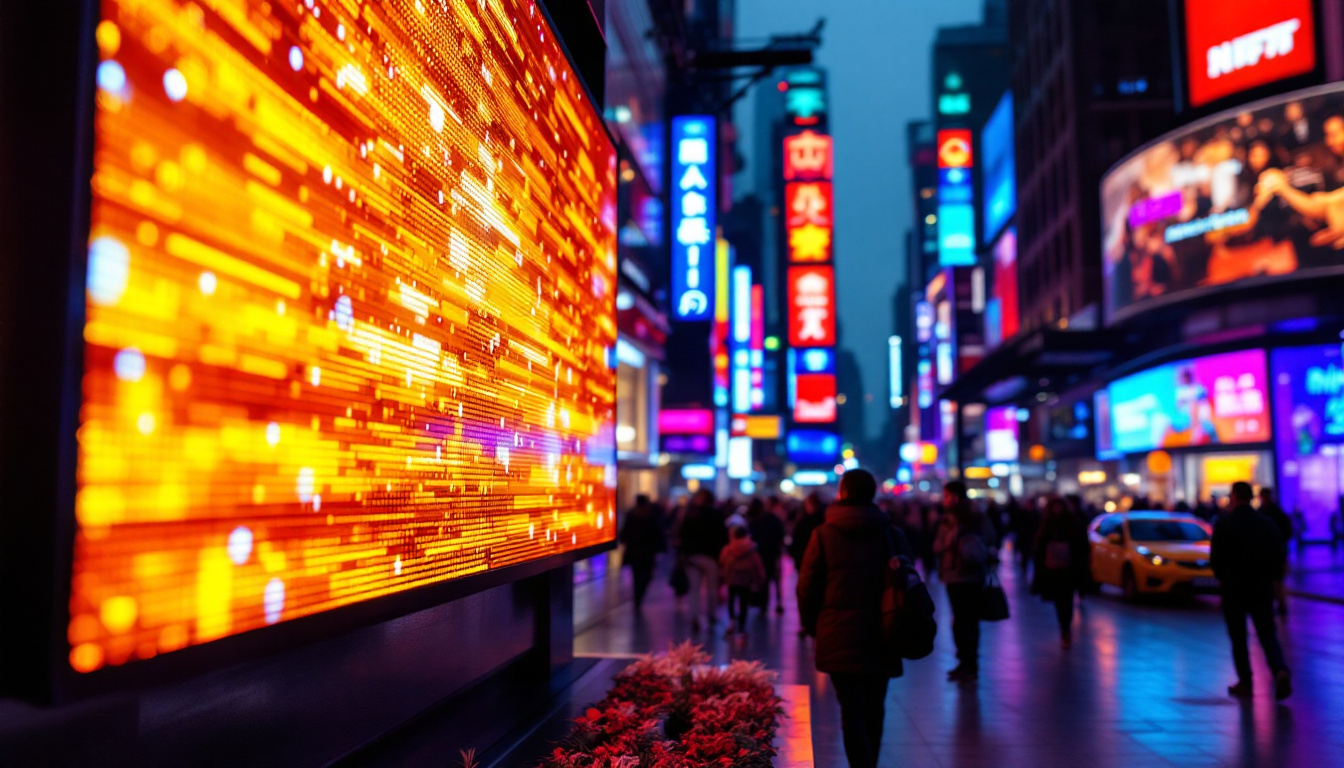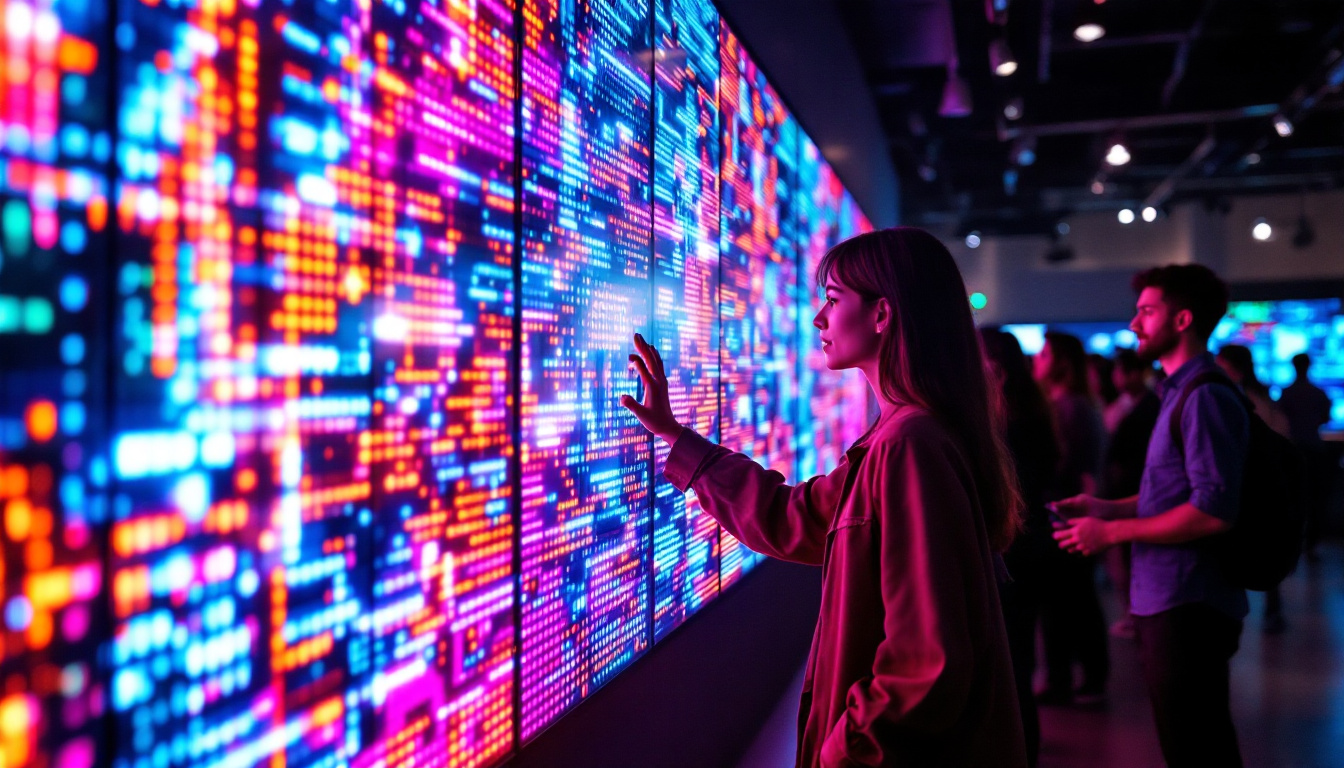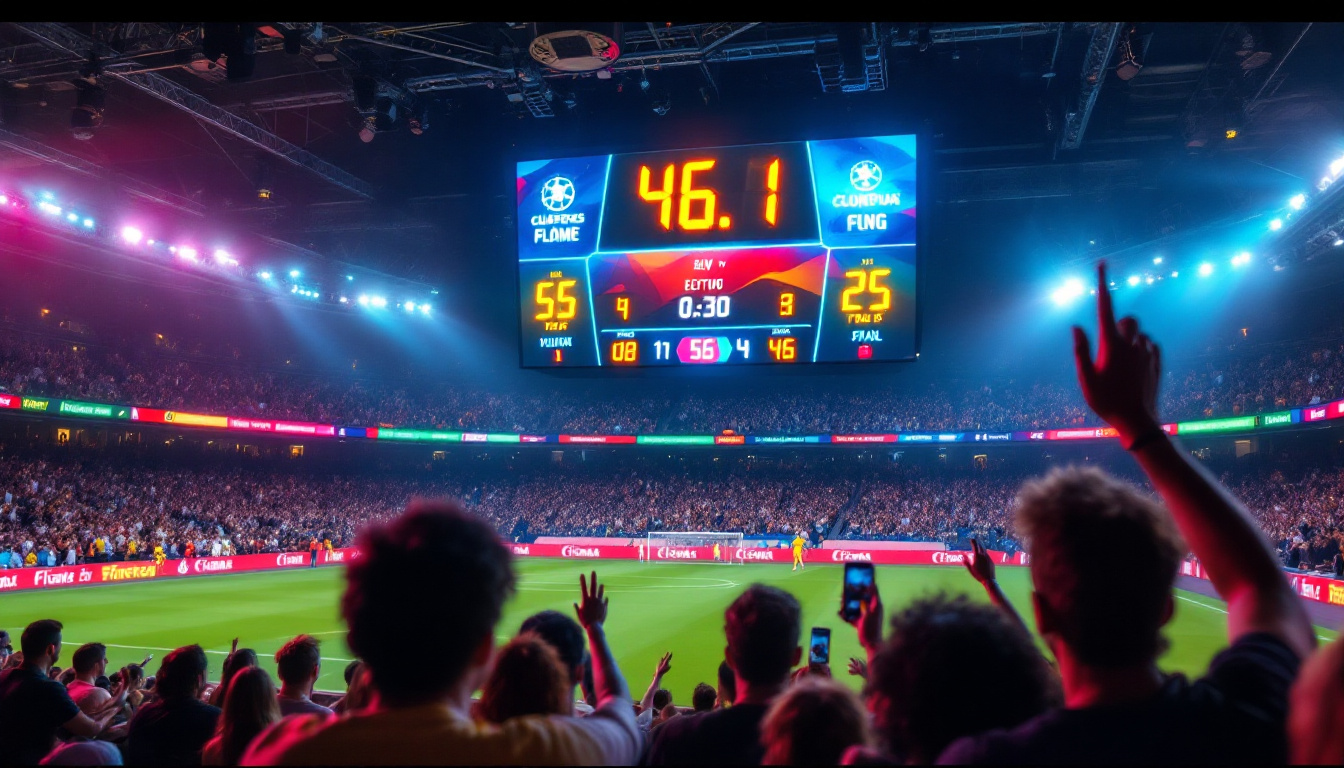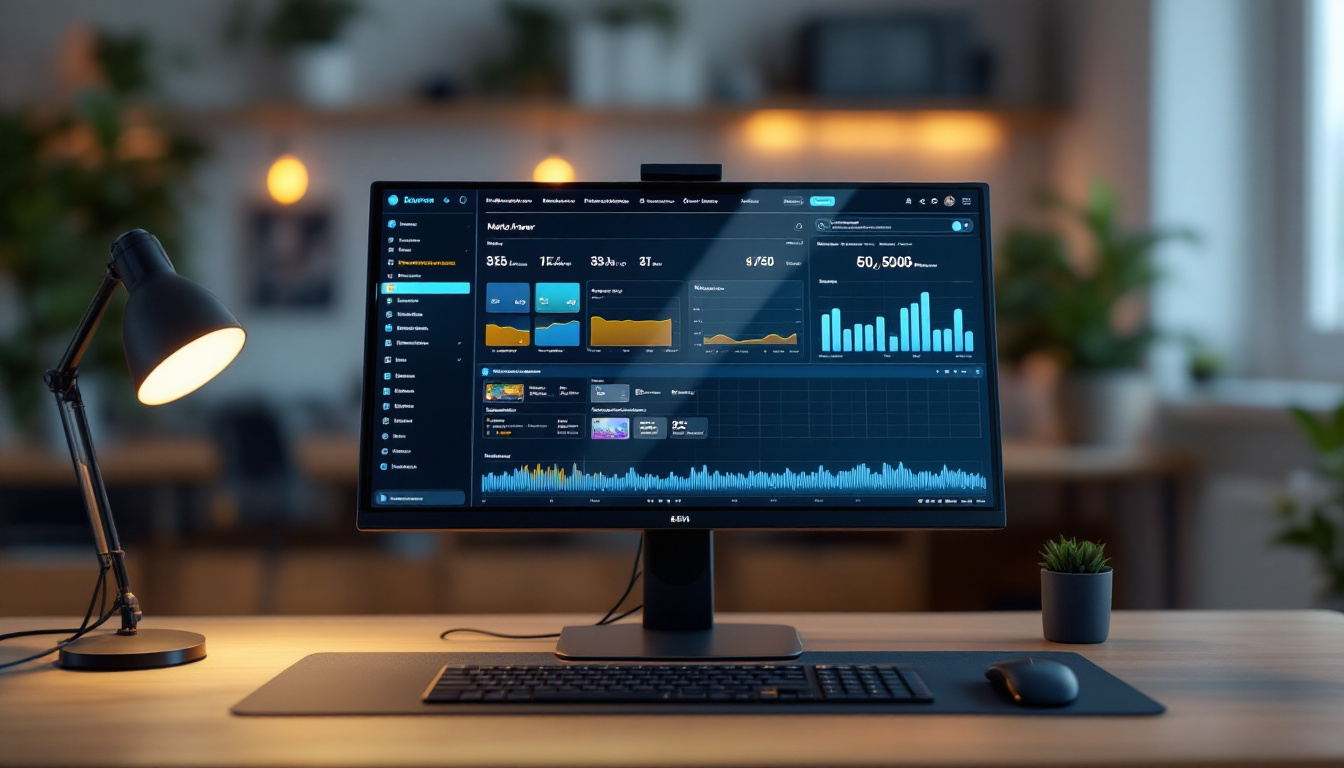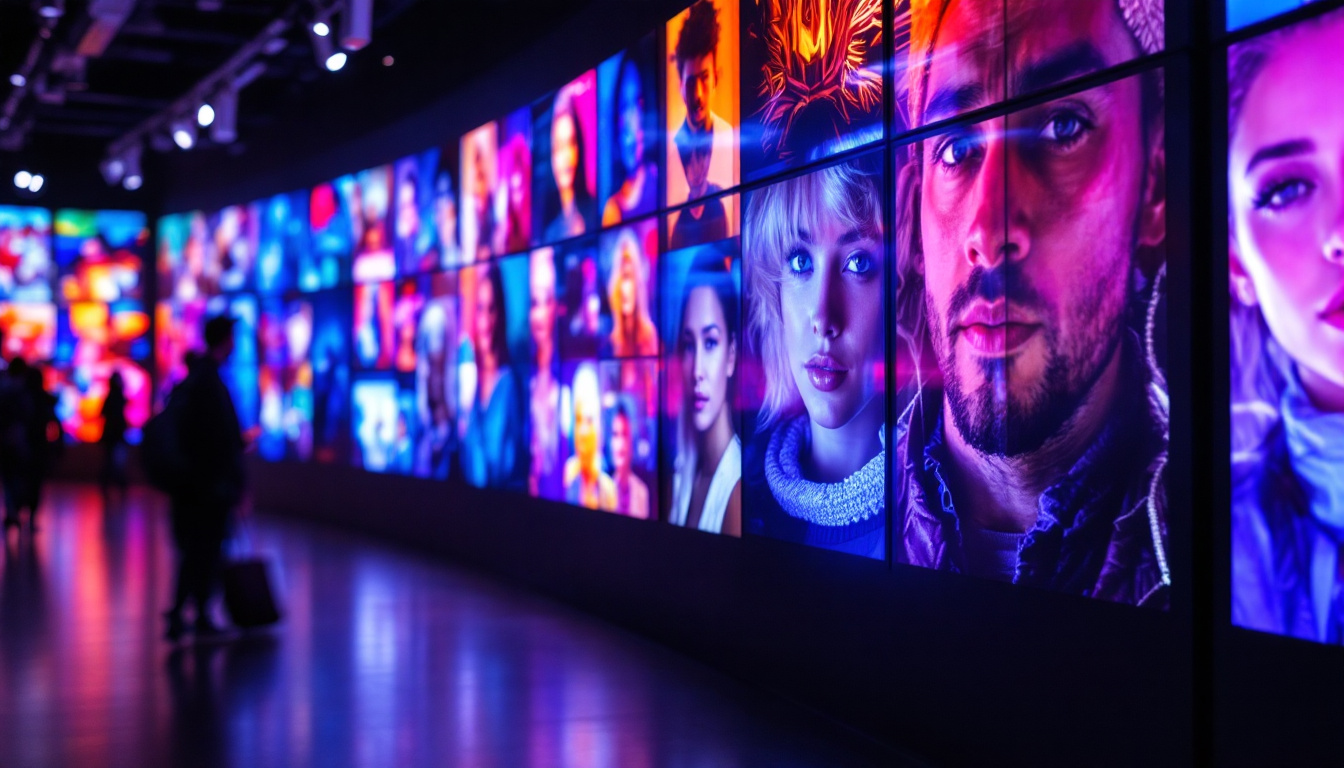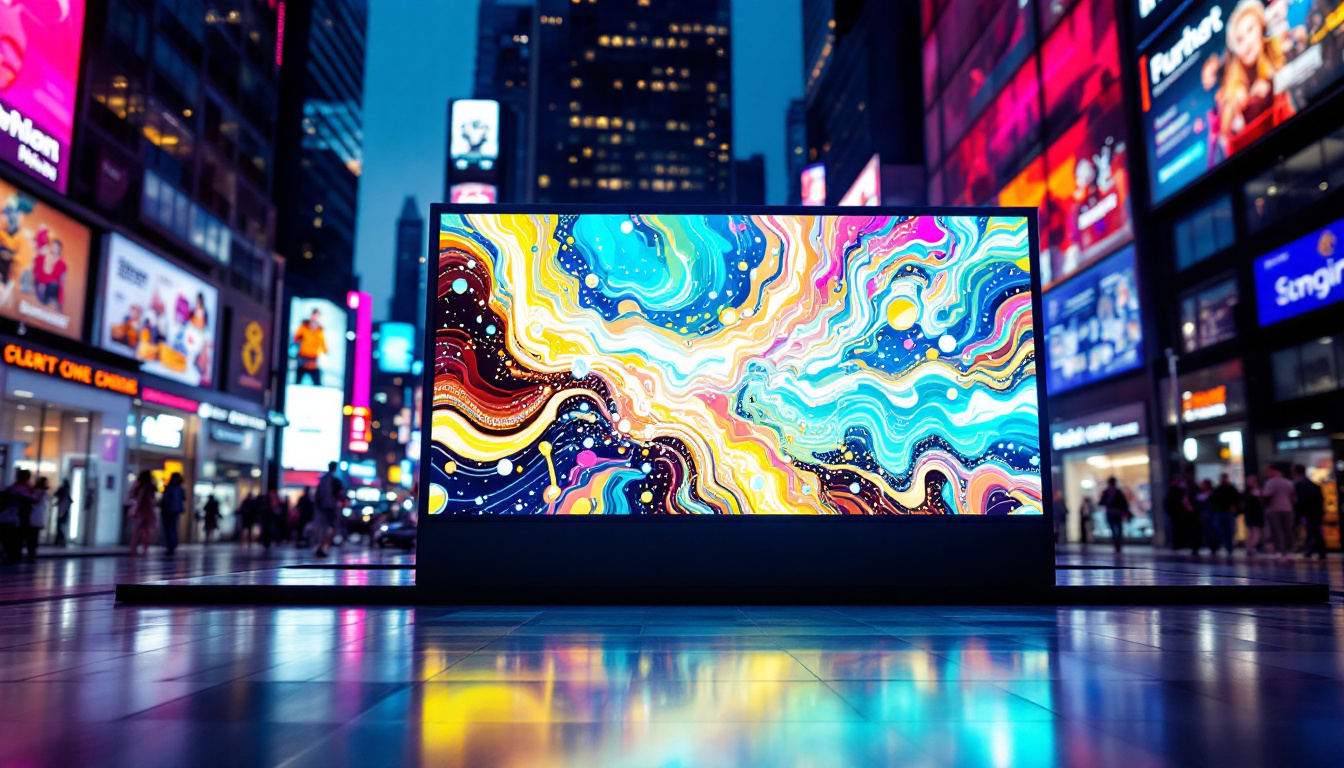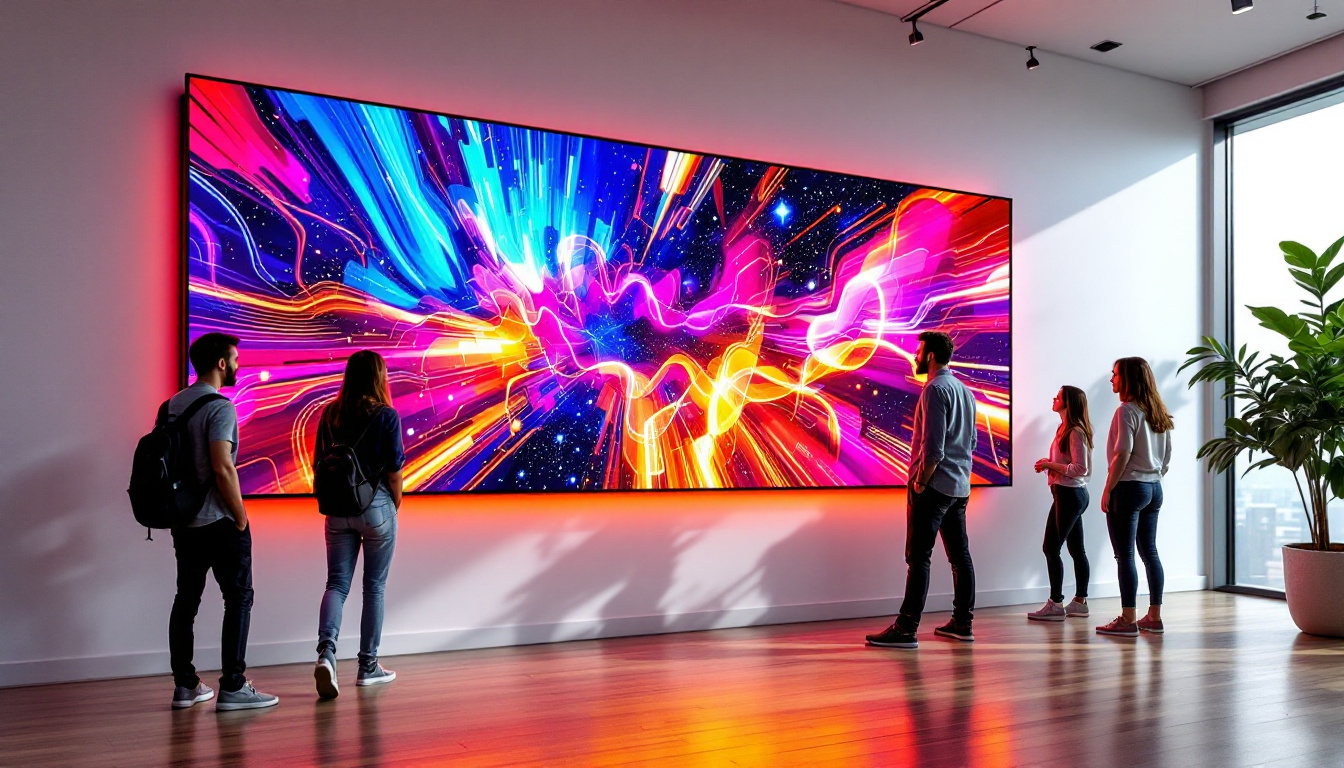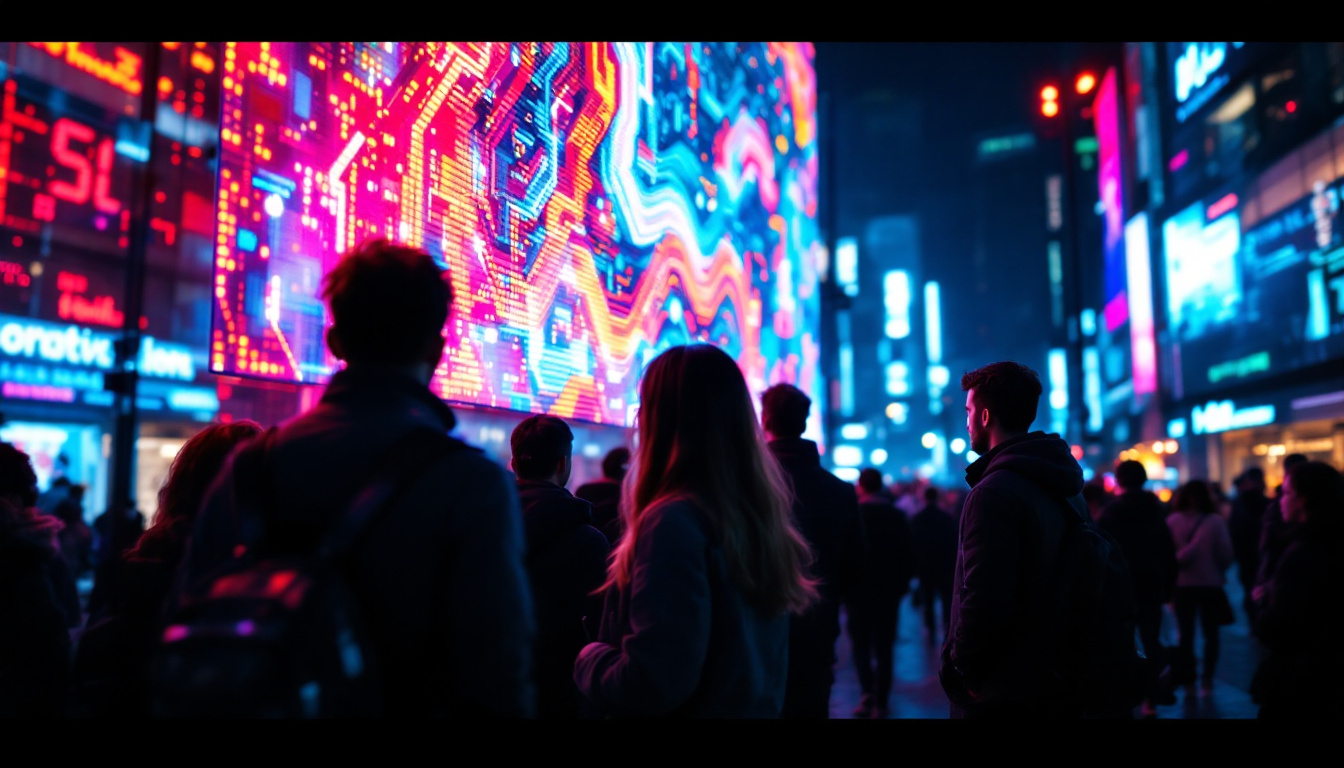The world of display technology has evolved significantly over the past few decades, leading to the development of interactive projection walls and LED displays that are transforming the way we experience visual content. These innovative technologies are not only enhancing the aesthetics of spaces but also revolutionizing how information is shared and interacted with. This article delves into the intricacies of interactive projection walls and LED displays, exploring their features, applications, and the technology behind them.
Understanding Interactive Projection Walls
Interactive projection walls are large-scale displays that utilize projection technology to create an engaging visual experience. These walls can transform any surface into an interactive canvas, allowing users to manipulate content through touch or gesture. The integration of interactive elements makes these displays ideal for various environments, including educational institutions, corporate settings, and entertainment venues.
How Interactive Projection Works
The core of an interactive projection wall lies in its ability to project images or videos onto a surface while simultaneously tracking user interactions. This is typically achieved through a combination of projectors, sensors, and software. The projectors cast images onto the wall, while sensors detect movements or touches, enabling real-time interaction.
Common technologies used in interactive projection include infrared sensors, cameras, and touch-sensitive surfaces. These components work together to create a seamless experience, allowing users to engage with the projected content in a natural and intuitive manner. For instance, users can swipe, pinch, or tap on the projected images, similar to how they would interact with a touchscreen device. This interactivity is often enhanced by sophisticated software algorithms that can recognize gestures and translate them into actions, making the interaction feel fluid and responsive.
Applications of Interactive Projection Walls
Interactive projection walls find applications across various sectors. In education, they serve as dynamic teaching tools, enabling educators to present information in an engaging manner. Students can collaborate on projects, participate in interactive lessons, and explore complex concepts through visual aids. For example, a science class might use an interactive projection wall to visualize molecular structures, allowing students to manipulate and examine them from different angles, thereby deepening their understanding of the subject matter.
In corporate environments, these walls facilitate presentations and brainstorming sessions. Teams can visualize data, share ideas, and collaborate in real-time, enhancing productivity and creativity. The ability to project live data and analytics can help teams make informed decisions on the spot, fostering a culture of innovation. Additionally, in retail and entertainment, interactive projection walls create immersive experiences that captivate audiences, making them ideal for marketing campaigns and exhibitions. Retailers can use these walls to showcase products in a captivating way, allowing customers to interact with the content, such as customizing a product or exploring its features through engaging visuals. This not only enhances customer experience but also drives sales by creating a memorable interaction that resonates with potential buyers.
LED Display Technology: A Closer Look
LED (Light Emitting Diode) display technology has gained immense popularity due to its versatility, energy efficiency, and superior image quality. Unlike traditional projection systems, LED displays utilize an array of tiny light-emitting diodes to create images, resulting in bright, vibrant visuals with high contrast ratios.
Types of LED Displays
LED displays come in various forms, each suited for different applications. The most common types include:
- Direct View LED Displays: These displays consist of individual LED modules that form a larger screen. They are often used for large outdoor billboards and indoor video walls.
- LED Backlit Displays: These screens use LEDs to illuminate an LCD panel from behind. They are commonly found in televisions and computer monitors, offering improved brightness and color accuracy compared to traditional LCDs.
- MicroLED Displays: A newer technology, MicroLEDs consist of microscopic LEDs that can be used to create high-resolution displays with exceptional color performance and energy efficiency.
Advantages of LED Displays
LED displays offer several advantages over traditional display technologies. One of the most significant benefits is their energy efficiency. LED technology consumes less power, resulting in lower operational costs and a reduced environmental impact.
Moreover, LED displays provide superior image quality, with high brightness levels and excellent color reproduction. This makes them suitable for various lighting conditions, from dimly lit rooms to bright outdoor environments. Additionally, LED displays have a longer lifespan compared to other technologies, reducing the need for frequent replacements.
Another noteworthy advantage of LED displays is their flexibility in design and installation. Unlike conventional displays, which may require bulky setups, LED screens can be configured in various shapes and sizes, allowing for creative installations that can enhance architectural aesthetics. This adaptability has made them a popular choice in modern venues, such as concert halls and sports arenas, where immersive visual experiences are paramount.
Furthermore, advancements in LED technology have led to the development of features such as high dynamic range (HDR) and enhanced refresh rates. These improvements contribute to a more dynamic viewing experience, making LED displays ideal for applications that demand rapid motion clarity, such as gaming and live sports broadcasting. As the technology continues to evolve, we can expect even more innovative applications and enhancements that will further solidify LED displays as a leading choice in the visual display market.
Combining Interactive Projection with LED Technology
The integration of interactive projection walls with LED technology creates a powerful combination that enhances user engagement and visual appeal. By utilizing LED displays as the projection surface, organizations can achieve higher brightness and better color accuracy, resulting in a more immersive experience.
Benefits of Integration
Combining interactive projection with LED technology offers several benefits:
- Enhanced Visual Quality: LED displays provide crisp, clear images that improve the overall quality of the projected content. This is particularly important in environments where visual clarity is paramount, such as in educational or corporate settings.
- Increased Durability: LED displays are generally more robust than traditional projection surfaces, making them ideal for high-traffic areas. This durability ensures that the interactive projection wall remains functional and visually appealing over time.
- Versatile Applications: The combination of these technologies allows for a wide range of applications, from interactive art installations to corporate presentations, making them suitable for various industries.
Challenges and Considerations
While the integration of interactive projection and LED technology presents numerous advantages, it also comes with challenges. One of the primary concerns is the initial investment required for high-quality LED displays and interactive projection systems. Organizations must carefully evaluate their budget and determine the potential return on investment.
Additionally, technical expertise is essential for the installation and maintenance of these systems. Ensuring that the interactive projection wall functions smoothly requires skilled personnel who can troubleshoot issues and perform regular maintenance.
Moreover, the environmental conditions of the installation site can significantly impact the performance of both interactive projection and LED technology. Factors such as ambient light levels, room size, and wall texture must be considered to optimize the viewing experience. For instance, in brightly lit environments, the brightness of the LED display becomes crucial to ensure that projected images remain visible and vibrant. This necessitates a careful selection of LED products that can withstand various lighting conditions while maintaining their visual integrity.
Furthermore, user interaction design plays a pivotal role in the success of these installations. The effectiveness of an interactive projection wall is not solely dependent on the technology itself but also on how intuitively users can engage with the content. Thoughtful design that considers user experience can elevate the impact of the installation, making it not just a visual spectacle but also a meaningful interaction point. This could involve integrating touch-sensitive features or gesture recognition capabilities, allowing users to manipulate the projected content seamlessly, thus enhancing engagement and interactivity.
Future Trends in Interactive Projection and LED Displays
The landscape of interactive projection walls and LED displays is continually evolving, driven by advancements in technology and changing user expectations. Several trends are shaping the future of these display technologies.
Advancements in Interactivity
As technology progresses, the level of interactivity offered by projection walls is expected to increase. Innovations such as gesture recognition, voice commands, and augmented reality (AR) integration will enhance user experiences, allowing for more intuitive interactions with projected content.
Moreover, the development of artificial intelligence (AI) will enable systems to learn user preferences and adapt content accordingly. This personalization will create more engaging and relevant experiences for users, whether in educational, corporate, or entertainment settings.
Improved Resolution and Color Accuracy
With the advent of technologies like 8K resolution and advanced color calibration techniques, LED displays are set to deliver even more stunning visuals. Higher resolution will allow for greater detail in images and videos, while improved color accuracy will ensure that content is displayed as intended.
These advancements will be particularly beneficial in fields such as medical imaging, design, and entertainment, where precise visuals are crucial for effective communication and decision-making.
Conclusion
Interactive projection walls and LED displays represent a significant leap forward in display technology, offering enhanced visual experiences and interactivity. As these technologies continue to evolve, they will play an increasingly vital role in various sectors, from education and corporate environments to entertainment and beyond.
Organizations looking to implement these technologies must consider the benefits and challenges associated with them. By understanding the intricacies of interactive projection and LED displays, businesses can make informed decisions that align with their goals and enhance user engagement.
In a world where visual communication is paramount, investing in interactive projection walls and LED displays is not just a trend; it is a strategic move towards creating more engaging, informative, and immersive experiences for audiences.
Discover LumenMatrix’s Innovative LED Solutions
Ready to elevate your space with the latest in display technology? LumenMatrix is at the forefront of creating immersive environments through our comprehensive range of LED display modules. From vibrant Indoor and Outdoor LED Wall Displays to dynamic Vehicle and Sports LED Displays, our solutions are designed to captivate and engage. Experience the future of visual communication with our Custom, Floor, All-in-One, and Transparent LED Displays. Don’t just share your message—make it resonate with clarity and impact. Check out LumenMatrix LED Display Solutions today and transform your visual storytelling.

